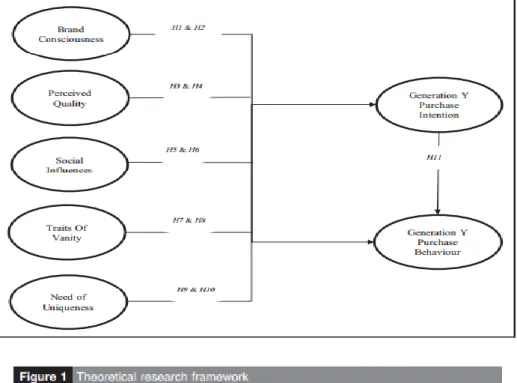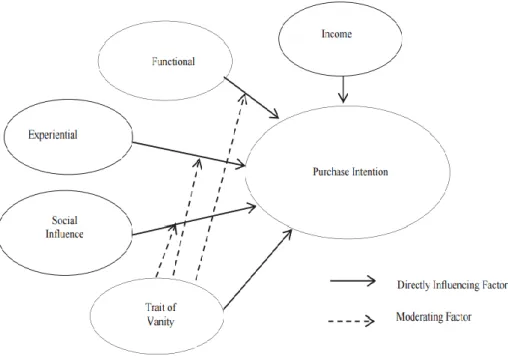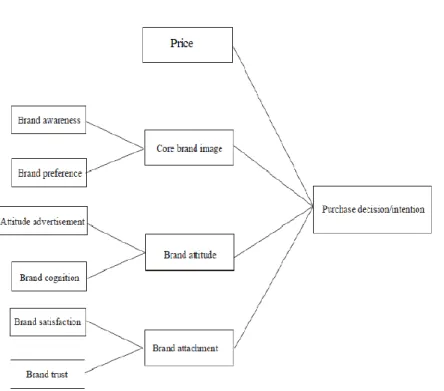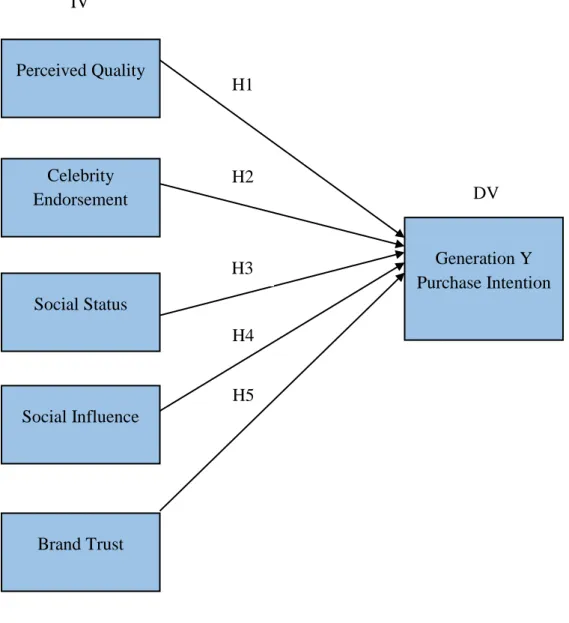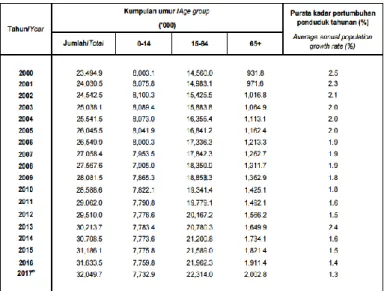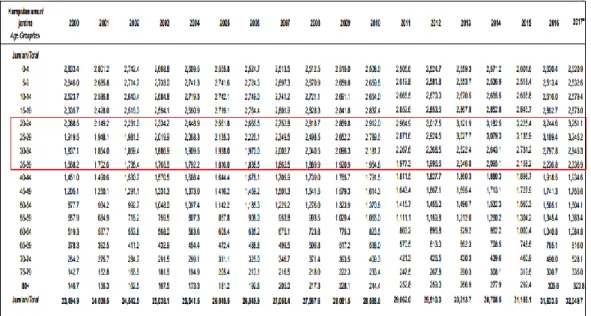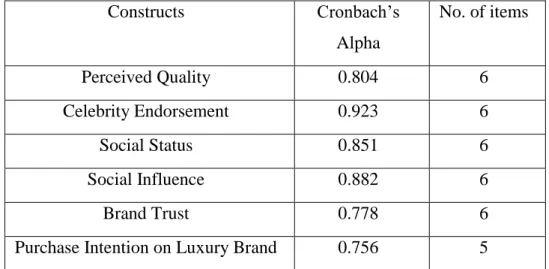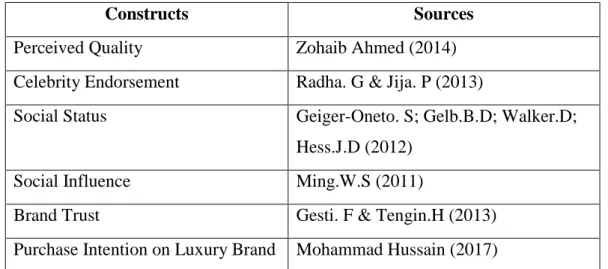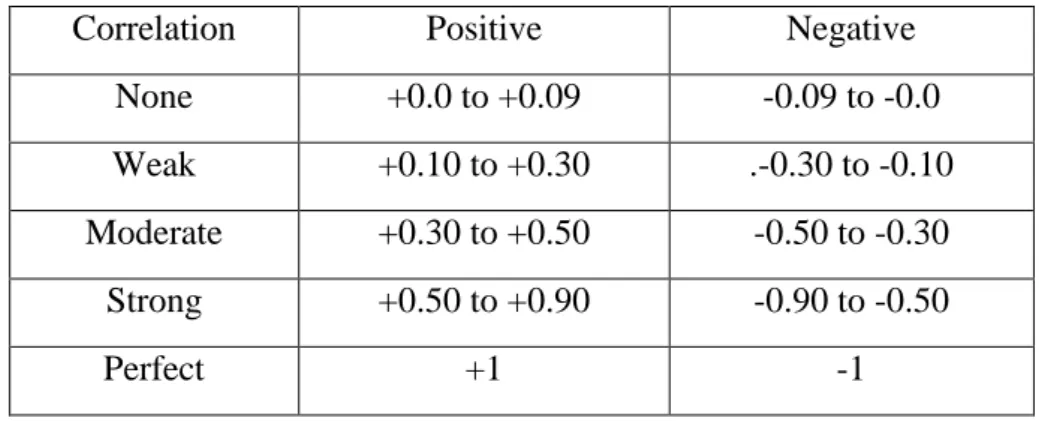Nowadays, the luxury brand includes different types of products and consists of different types of brand name all over the world. The advancement of technology has not only brought those luxury brand companies into the new business trend, but also made changes towards the purchase intention of Generation Y. This research examines the factors that influence the purchase intention of Generation Y towards luxury brand in Malaysia.
The researcher has identified five main factors that influence the purchase intention of Generation Y towards the luxury brand. Through this research study, we are able to understand more about what makes Generation Y willing to influence their intention to purchase the luxury brand. This study aimed to examine the factors influencing the purchase intention of Generation Y for the luxury brand.
Purchase intention always evolves and is influenced by various reasons that make Generation Y planning to purchase the luxury brand or product in the future. Therefore, based on the results of the research study, the independent variables are perceived quality, celebrity endorsement, social status, social influence and brand trust will be considered as determinants of factors influencing purchase intention towards the luxury brand.
RESEARCH OVERVIEW
- Research Background
- Problem Statement
- Research Objectives
- General Objectives
- Specific Objectives
- Research Questions
- Hypotheses of the Study
- Significance of the Study
- Chapter Layout
- Conclusion
According to Mamat et.al (2015), indicated that the luxury brand is normally quiet expensive which charges a large amount of money for the buyers and it usually fits into niche market. Now over the years, luxury brand product has continued to increase in demand from the developing countries (Narang, 2011). In addition, the market for luxury brands is also increasing in demand from Malaysia's consumers as there are high income levels.
This specific research therefore intended to discover whether perceived quality associated with the luxury goods will influence Generation Y's intention to purchase the luxury brand. Therefore, this point of view of the researchers is to find out how the social status can have an effect on the intention of the Generation Y with the purchase of the luxury brand. In general, the researchers wanted to find out what will be the reasons that Generation Y consumes the most of the luxury brand.
Thus, it is important to understand how brand trust can influence luxury brand purchase intention. This can help the marketer and researcher to understand the expectation and perception of generation Y mainly on their intention to purchase different types of luxury brand.
LITERATURE REVIEW
Review of Literatures
- Dependent Variable – Purchase Intention on Luxury
- Independent Variable – Perceived Quality
- Independent Variable – Celebrity Endorsement
- Independent Variable – Social Status
- Independent Variable – Social Influence
- Independent Variable – Brand Trust
Review of Relevant Theoretical Models
- Perceived Quality
- Celebrity Endorsement
- Social Status
- Social Influence
- Brand Trust
34;A structural model of the antecedents and consequences of Generation Y luxury fashion products purchase decisions", Young Consumers, Vol. By referring to Figure 2.1, the researchers have adopted from the framework of "A structural model of the antecedents and impacts of Generation Y luxury fashion goods purchases decisions" by Catherine Qjaian, Catherine Qjaiian, Catherine Qjaiian and Catherine Qjaiian (2009). 017) to create the proposed framework for this research. By referring to Figure 2.3 the researchers have taken the framework of "Perceived Purchase Intention of Undergraduates Towards Luxury Brands: Case Study" by Tan. 2013) to create the proposed framework for this research.
Purchase intentions of foreign luxury brand handbags among consumers in Kuala Lumpur, Malaysia. Economics and Finance Proceedings. Referring to Figure 2.4, the researchers have adopted from the framework of “Purchase Intentions of Foreign Luxury Brand Handbags among Consumers in Kuala Lumpur, Malaysia”. from Mamat. Referring to Figure 2.5, the researchers have adopted from Tariq's framework “The Impact of Branded Goods on Consumer Purchase Intentions”.
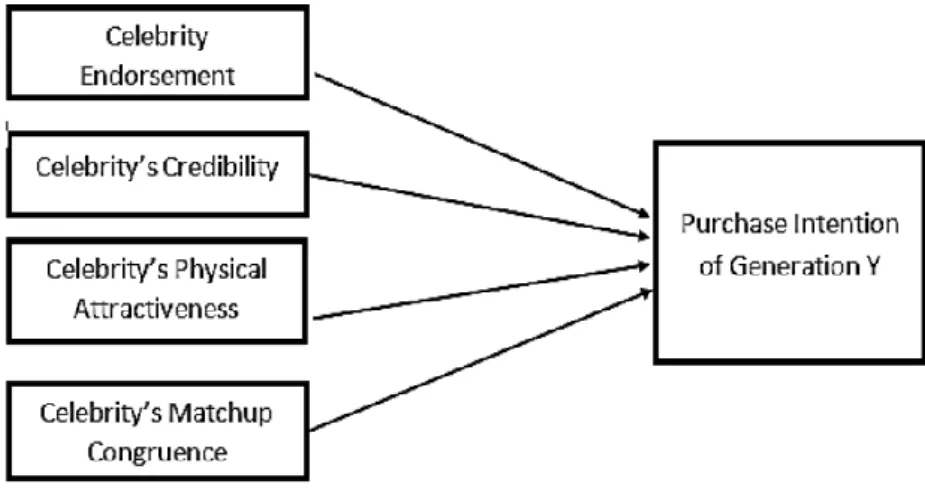
Proposed Conceptual Framework
Hypotheses Development
- Perceived Quality and Purchase Intention
- Celebrity Endorsement and Purchase Intention
- Social Status and Purchase Intention
- Social Influence and Purchase Intention
- Brand Trust and Purchase Intention
Additionally, Generation Y appeals and favors items that reflect their self-awareness or self-image, just like the endorser. However, scandals involved by the endorser will affect image recognition and consumer purchase intentions, bringing negative impacts to the brand. Thus, social status can influence the consumer's purchase intention and enable gaining respect from others.
Social influence on consumer purchase intention lies in their response to the social media marketing strategy. Therefore, word of mouth is a powerful asset for the luxury brand as referrals such as family, colleagues, relatives and friends will always give valuable advice and suggestions for choosing luxury products, this initiates the consumer's purchase intention, encouraging them to consume the similar brand that their loved one uses, regardless of price. Customer trust is one of the key factors to sell luxury brands in the competitive luxury industry.
Therefore, the anticipation of actions and manners of the luxury retailer will always be expected. Providing the needs that consistently exceed the customer's expectations is the way to build strong personal relationships with the customer, thereby gaining customer trust and driving purchase intent.
Conclusion
METHODOLOGY
Research Design
- Descriptive Study
- Quantitative Research
- Casual Study
Data Collection
- Primary Data
- Secondary Data
Sampling Design
- Target Population
- Sampling Frame and Sampling Location
- Sampling Elements
- Sampling Technique
- Sampling Size
Research Instrument
- Questionnaire Design
- Pilot Test
Constructs Measurement
- Measurement Scale
- Origin of Construct
Data Processing
- Questionnaire Checking
- Data Editing
- Data Coding
- Data Transcribing
- Data Cleaning
Data Analysis
- Statistical Packaging for the Social Science (SPSS)
- Descriptive Analysis
- Scale Measurement
- Reliability Test
- Inferential Analysis
- Pearson’s Correlation Analysis
- Multiple Regression Analysis
Conclusion
DATA ANALYSIS
Descriptive Analysis
- Respondents Demographic Profile
- Gender
- Age
- Ethnicity
- Occupation
- Education Level
- Monthly Allowance
- Respondents General Information
- Do Respondents Own a Luxury Good or
- Which Luxury Brand Do Respondents Prefer To
- How Often Do Respondents Buy Luxury
- How Much Do Respondents Willing To Spend
- What are the Important Characteristics When
- Central Tendencies Measurement of Constructs
- Perceived Quality
- Celebrity Endorsement
- Social Status
- Social Influence
- Brand Trust
- Purchase Intention
Scale Measurement
- Reliability Analysis Test
Inferential Analysis
- Pearson’s Correlation Analysis
- Implication of Correlation
- Multiple Regression Analysis
- Implication of T-Test
Conclusion
DISCUSSION, CONCLUSION AND IMPLICATION
Summary of Statistical Analysis
- Descriptive Analysis
- Demographic Profile
- General Information
- Central Tendencies Measurement of
- Scale Measurement
- Inferential Analysis
- Pearson’s Correlation Analysis
- Multiple Regression Analysis
In total, the respondents are students, the respondents are workers, none of the respondents are pensioners and finally, a total of 4 (2.0%) respondents belong to other occupation categories. While for the level of education among these respondents, most of them are with university holder consists of respondents, followed by respondents are under degree holder respondents are postgraduate of respondents are with SPM holder, 9 (4.5%) respondents surveyed with foundation holder, 2 (1.0%) respondents with master holder and none of them with A level holder and a total of 7 (3.5%) respondents with other education. Among these respondents, respondents never buy luxury goods, good respondents buy luxury goods once a year, respondents buy luxury goods twice a year, respondents who are likely to buy luxury goods more than twice a year and a total of 9 (4.50%) respondents will buy luxury goods necessarily depend on their luxury brand.
From the perceived quality, the statement of "I will only buy a luxury brand if the product uses good materials that provide lasting value" has the highest mean of 4.35. Among the celebrity endorsement, the statement "Celebrity's physical appearance enhances the luxury brand's image and value" ranked highest with a mean of 3.355. Among the social status, the statement of "Luxury brands can symbolize social status" has the highest mean of 3.735.
For the social influence part, the statement "Before buying a luxury brand product, I would like to ask for suggestions from others" shows the highest mean of 3.365. According to brand trust, the statement "I will buy luxury brand because it meets my expectations" scored the highest mean of 4.035. Finally, according to the purchase intention, the expression "I am satisfied with the purchase of luxury brands that provide good quality and motivate me to purchase luxury brands" shows the maximum mean of 3,895.
According to the results, among the independent variables, celebrity endorsement showed the highest score of Cronbach's alpha value of 0.890, next is social status with second highest score with 0.885, next is social influence with 0.870, brand trust ranked fourth with 0.827 and perceived quality has the score of 0.733 alpha value. The value implies that 6.37% of luxury brand purchase intent is influenced by perceived quality, celebrity endorsement, social status, social influence and brand trust. Although only two of the independent variables show a substantial relationship with the dependent variable, namely social status and brand confidence.
Social status shows a value of 0.000 and brand trust shows a value of 0.000, so there is a significant relationship with purchase intention. Therefore, the most relevant of the brand trust hypotheses clearly showed that it has the strongest effect with the purchase intention of the luxury brand with a value of 0.601. On the other hand, the value provides -0.013, which is the social influence that included the smallest effect of purchase intention on the luxury brand.
Discussion of Major Findings
Celebrity endorsement cannot influence the consumer's attitude towards purchase intention for luxury brand as the negative image of the endorser will have negative impact on the brand. The primary purpose of this research study is to investigate the factors in terms of the perceived quality, celebrity endorsement, social status, social influence and brand trust that will influence the Generation Y's purchase intention on the luxury brand. From this research study, the statistical result shows the social status has no insignificant relationship with the purchase intention on luxury brand.
It is clear to understand that most of the customers buy the luxury brand to reflect their social goals. We are currently conducting a study on "A Study of Factors Influencing Generation Y's Luxury Brand Purchase Intention in Malaysia" for our final year project. 1 The quality of the material used for the luxury brand affects my purchase intention.
4 I will only buy a luxury brand if the products are made from good materials that provide lasting value. 3 Buying a luxury brand primarily for the symbolic reason that it reflects an individual or social goal. 4. Buy a luxury brand to gain respect from others and communicate your social status.
1 I will buy a luxury brand because the brand will act in my best interest. The quality of the material used for the luxury brand will affect my purchase intention. I only buy a luxury brand if the product uses good materials that provide lasting value.
Purchase luxury brand primary because of symbolic reason in order to reflect individual or social purpose. Buy luxury brand to gain respect from others and to communicate their social status. I will buy luxury brand because the brand will act in my best interest.
Implication of the Study
- Managerial Implications
Limitation of Study
Recommendation for Future Research
Conclusion
Questionnaire
Perceived Quality
Celebrity Endorsement
Social Status
Social Influence
Brand Trust
A Model of Factors influencing Geneation Y’s Purchase Intention of
Population by Age Group, 2000 - 2017, Malaysia
Total Numbers of Population in Malaysia of Different Generation
Sampling Size of Different Generation Y Age Group
Parts of IV and DV
Summary of Measures
Pilot Testing
Origin of Construct
Range of Cronbach’s Alpha value
Value for Pearson Correlation Analysis
Statistic of Respondents’ Gender
Percentage of Respondent Based on Gender
Statistics of Respondents’ Age
Percentage of Respondent Based on Age
Statistic of Respondents’ Ethnic Group
Percentage of Respondents’ Ethnic Group
Statistic of Respondents’ Occupation
Percentage of Respondents’ Occupation
Statistic of Respondents’ Education Level
Percentage of Respondents’ Occupation
Statistic of Respondents’ Monthly Allowance
Percentage of Respondents’ Monthly Allowance
Statistics of Do Respondents Own a Luxury Good or Brand
Percentage of Do Respondents Own a Luxury Good or Brand
Statistics of Which Luxury Brand Do Respondent Prefer to Have in The
Percentage of Which Luxury Brand Do Respondent Prefer to Have in The
Statistics of How Often Do Respondents Buy Luxury Goods
Percentage of How Often Do Respondents Buy Luxury Goods
Statistics of How Much Do Respondents Willing to Spend on Luxury
Percentage of How Much Do Respondents Willing to Spend on Luxury
Statistic of What are the Important Characteristics When Buying Luxury
Percentage of What are the Important Characteristics When Buying
Central Tendencies Measurement of Constructs: Celebrity
Central Tendencies Measurement of Constructs: Social Status
Central Tendencies Measurement of Constructs: Social Influence
Central Tendencies Measurement of Constructs: Brand Trust
Central Tendencies Measurement of Constructs: Purchase
Reliability Analysis for Independent Variables (IV)
Reliability Analysis for Dependent Variables (DV)
Correlation Matrix for Six Constructs
Multiple Regression Analysis Model Summary
Table of ANOVA
Output of Multiple Regression Analysis Coefficients
Summary of the Results for Hypotheses Testing
